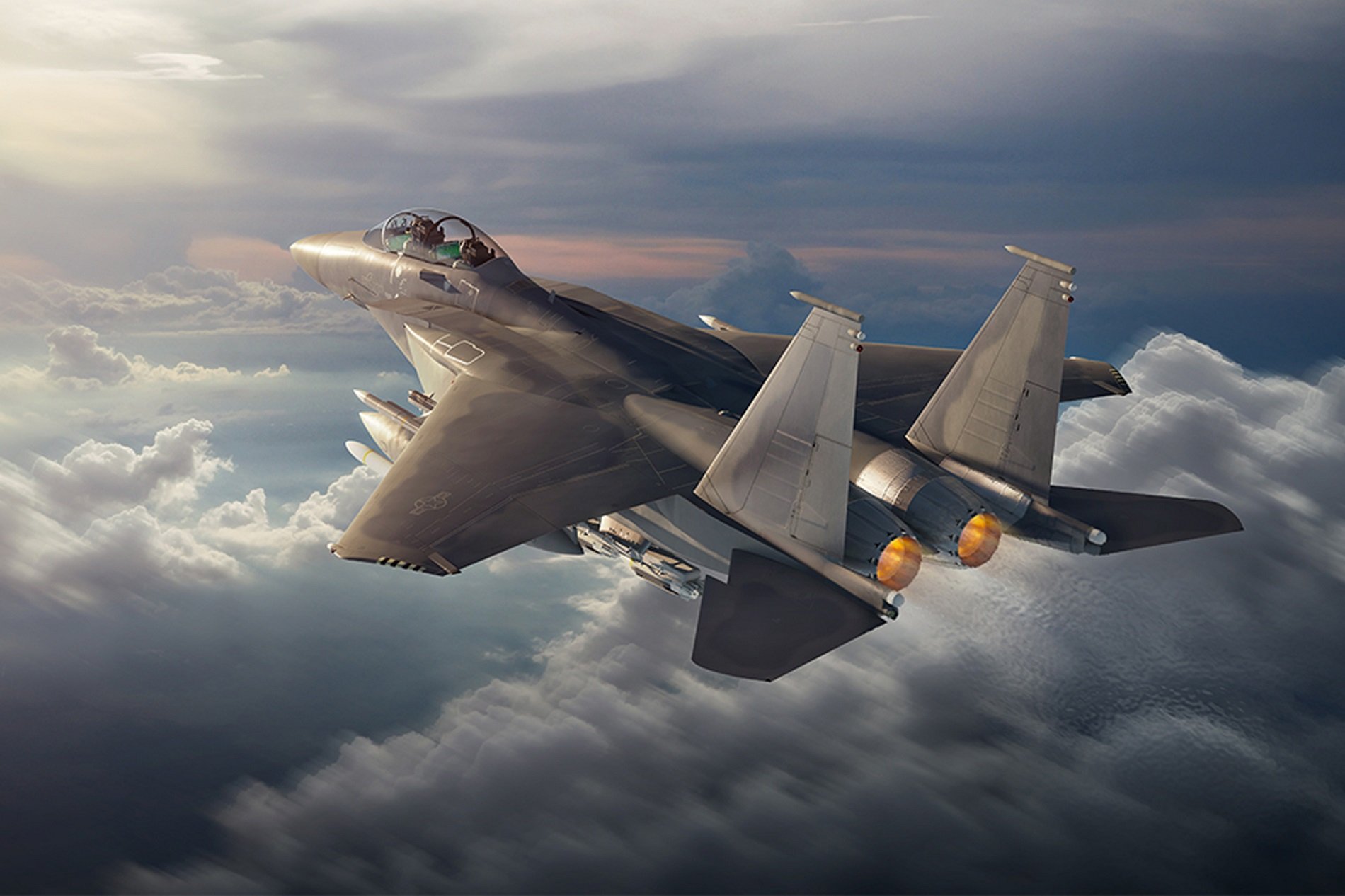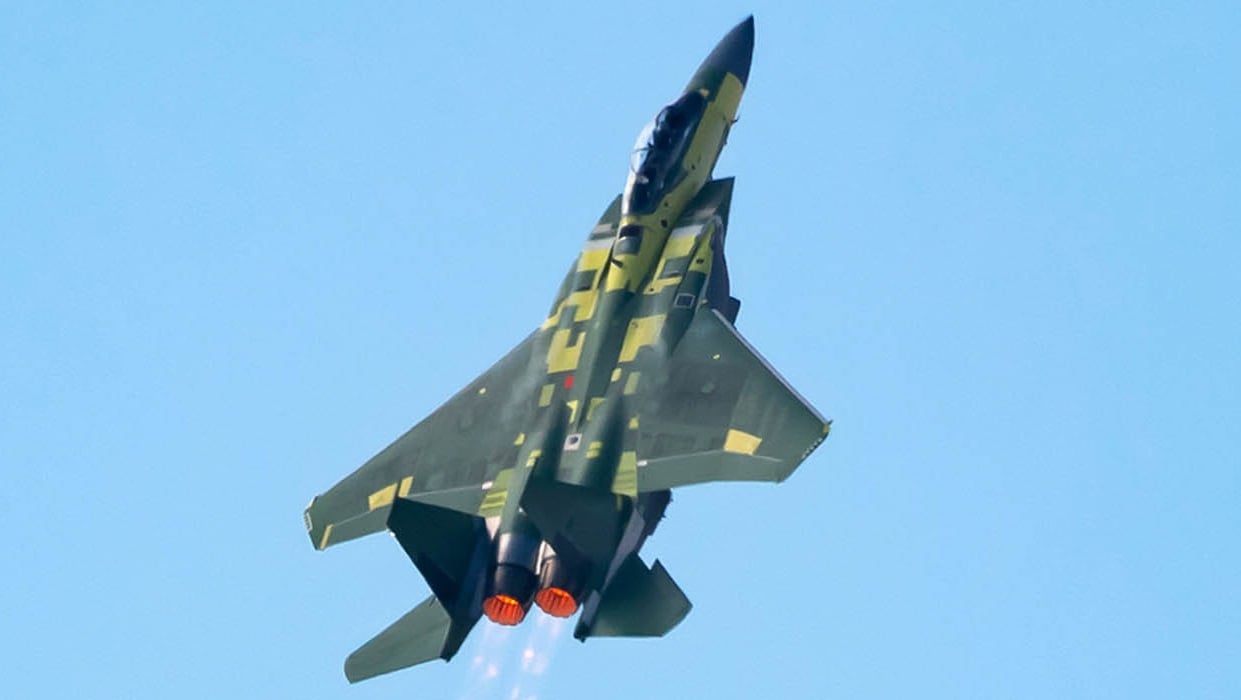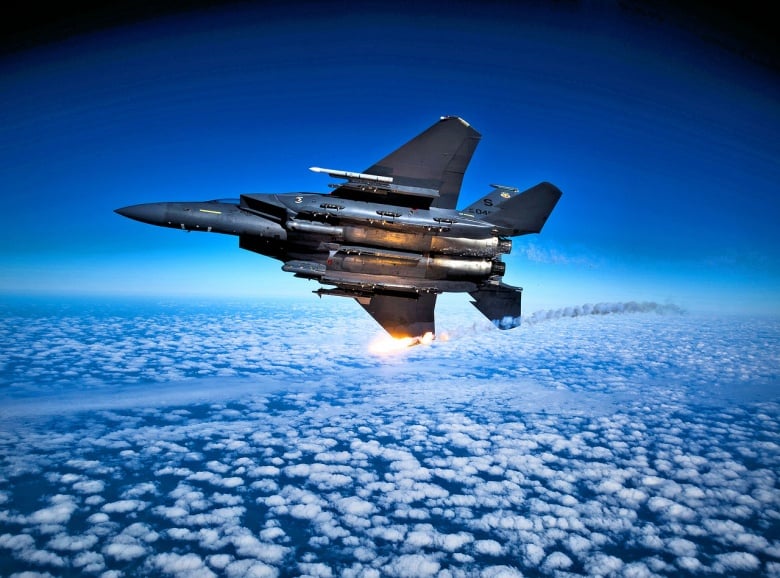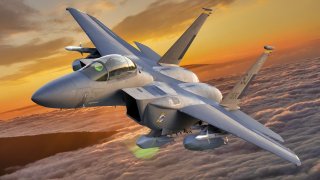The Amazing F-15EX Proves America’s Eagle Still Owns the Skies
The US Air Force plans to buy 104 F-15EX that will likely make their way to Air National Guard units.
In this era of somewhat sluggish stealth fighters capable of sneaking deep behind enemy lines, the F-15EX Eagle II stands out from the 21st-century pack. While this latest iteration of the legendary Cold War dogfighter comes jampacked with modern avionics – and even boasts the fastest mission computer ever affixed to a fighter – the F-15EX makes no effort to hide its approach in contested airspace.

The Eagle II knows you see it coming… and one could argue, it simply doesn’t care.
While stealth is still prized for air combat operations, not all missions require it. Because of the high operating costs associated with flying stealth fighters, 4th generation platforms like the F-15EX are seeing renewed life in air operations, like domestic defense, where being sneaky isn’t a priority. Now, the US Air Force wants to boost its domestic defense fleet by acquiring more than 100 of these formidable jets.
A new video released by Boeing shows the incredible aerobatic performance of the F-15QA, which is a variant of the Eagle designed specifically for Qatar. As a result, this video may be the closest glimpse we’ve gotten yet to just how much more capable the F-15EX will be in air combat, as the F-15EX is only the third version of the fighter to turn over control of the aircraft to a computer, following only Qatar’s F-15QA and Saudi Arabia’s F-15SA.
THE F-15 HAS ALWAYS BEEN A POWERHOUSE
The F-15’s operational lineage dates back to 1976 when it was meant to provide the United States with a capable response to what American officials believed was a Soviet superfighter in the Mach 3-capable MiG-25. When pictures of the MiG’s massive engines and sprawling wings first reached the West, many believed it to be the most capable fighter ever to take to the skies, prompting McDonnell Douglas to redouble its design efforts to give American pilots a fighting chance against this new supersonic behemoth.
By the time the US learned the truth about the MiG-25’s underwhelming performance (thanks to the defection of Soviet pilot Victor Belenko), the monster America had created in response, now known as the F-15 Eagle, had already been flying for nine months.
In the following years, the F-15 proved to be the most dominant air-to-air fighter of the 20th century, racking up an unparalleled 104 air combat wins against zero losses and spawning one of the most capable interdiction fighters of all time – the F-15E Strike Eagle. As the years wore on, the F-15 saw the addition of new weapons, like the AIM-120 AMRAAM, as well as more powerful onboard systems like the APG-63(V)3 radar.

But even with these improvements, America’s F-15s were soon eclipsed in capability by those of foreign partners who continued to fund F-15 development long after the United States stopped taking Eagle deliveries. As a result, the F-15EX benefits from about $5 billion worth of investment Qatar and Saudi Arabia funneled into their own Eagle programs.
WHY THE EAGLE II MAY BE THE BEST DOGFIGHTING F-15 EVER
The incredible maneuvers we see in Boeing’s new video are made possible thanks specifically to the aircraft’s advanced fly-by-wire controls, which replace the F-15’s previous hydro-mechanical control system that runs pilot inputs through a Control Augmentation System (CAS) to enhance responsiveness.
These new fly-by-wire controls make a significant difference in aircraft performance simply because a computer can do a far better job of rapidly shifting moving control surfaces to accomplish exactly what a pilot wants to do. In effect, rather than the pilot flying the aircraft, the F-15EX is flown by a computer with a pilot who uses the stick to indicate what they want the jet to do.

This not only allows for more effective control, but also for pushing the aircraft to limits that would be unsafe in a traditionally controlled platform. The computer knows exactly where the limit of the aircraft performance is, and as a result, it can push the fighter right up to the hairy edge of that limit and hold it there in ways a human operator simply couldn’t (or at least, couldn’t do consistently).
The F-15QA, and its F-15EX sibling, can even have the flight control systems set beyond a 9 G maximum load limit up to 12 Gs in emergency situations.
The F-15EX also sports a pair of F110-GE-129 afterburning turbofan engines.
As Boeing’s experimental test pilot, Jason “Mongoose” Dotter, told Aviation Week’s Steve Trimble in a recent episode of the Check 6 Podcast, the new controls allow these modern F-15s to perform aerobatic stunts usually reserved for “super-maneuverable thrust-vectoring fighters like the F-22, or Su-35, Su-57.”
Thrust vector control makes it possible for the pilot to orient the outflow of an engine’s thrust independent of the aircraft, allowing for incredible aerobatic maneuvers. The F-15EX does not have thrust vector control, but thanks to its powerful onboard computers, can fly like jets that do.

As Dotter later told Tremble in a video for Aviation Week about the maneuvers he demonstrates in the F-15EX for airshows, “I specifically pick of the F-22 – of the Raptor’s – maneuvers, and I’m able to replicate those in the F-15.”
Despite the incredible performance the Eagle II can achieve, it’s not all good news. F-15EX production has slipped behind schedule, with the third production F-15EX expected to be delivered anytime now after a two-year delay caused in large part by complications associated with assembling the forward fuselages.
The US Air Force plans to buy 104 F-15EX that will likely make their way to Air National Guard units.
About the Author
Alex Hollings is a writer, dad, and Marine veteran.
This first appeared in Sandboxx.


